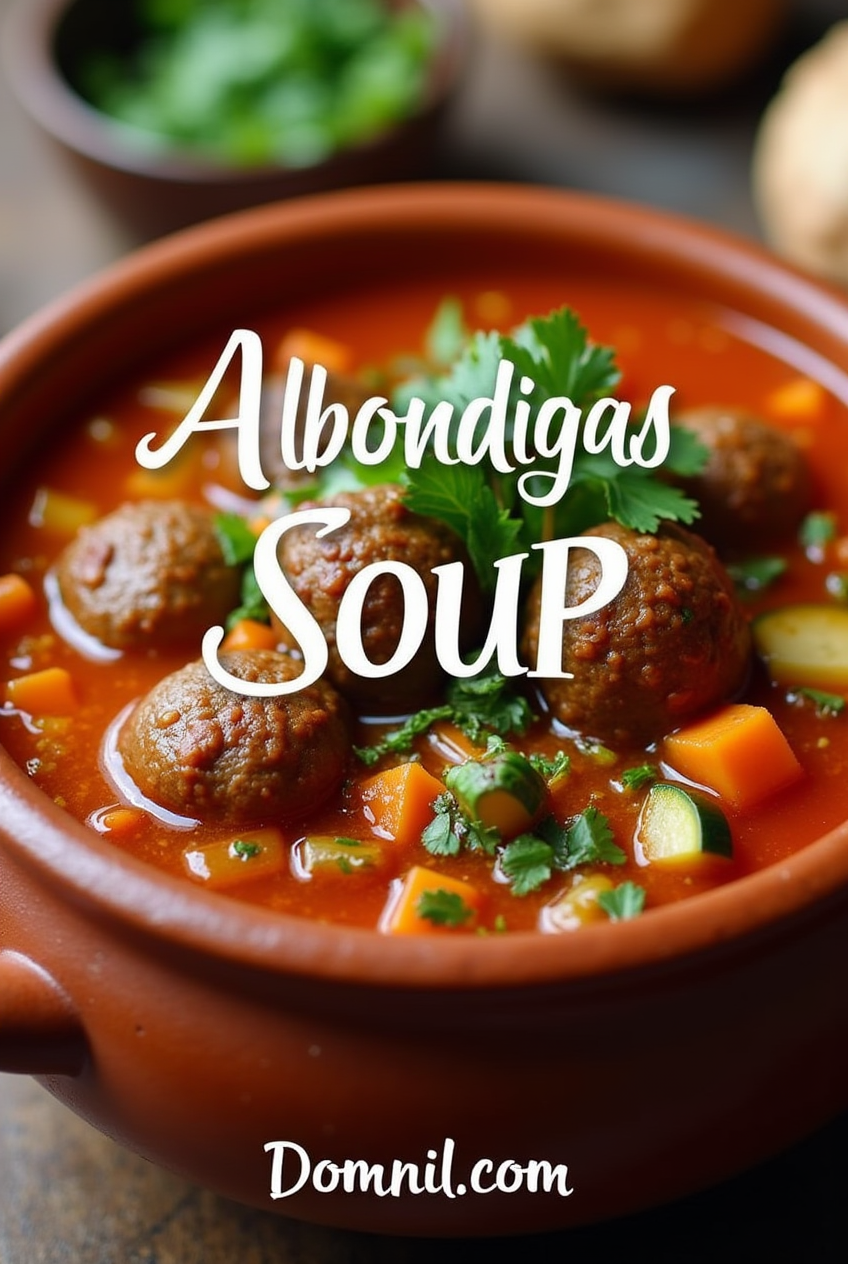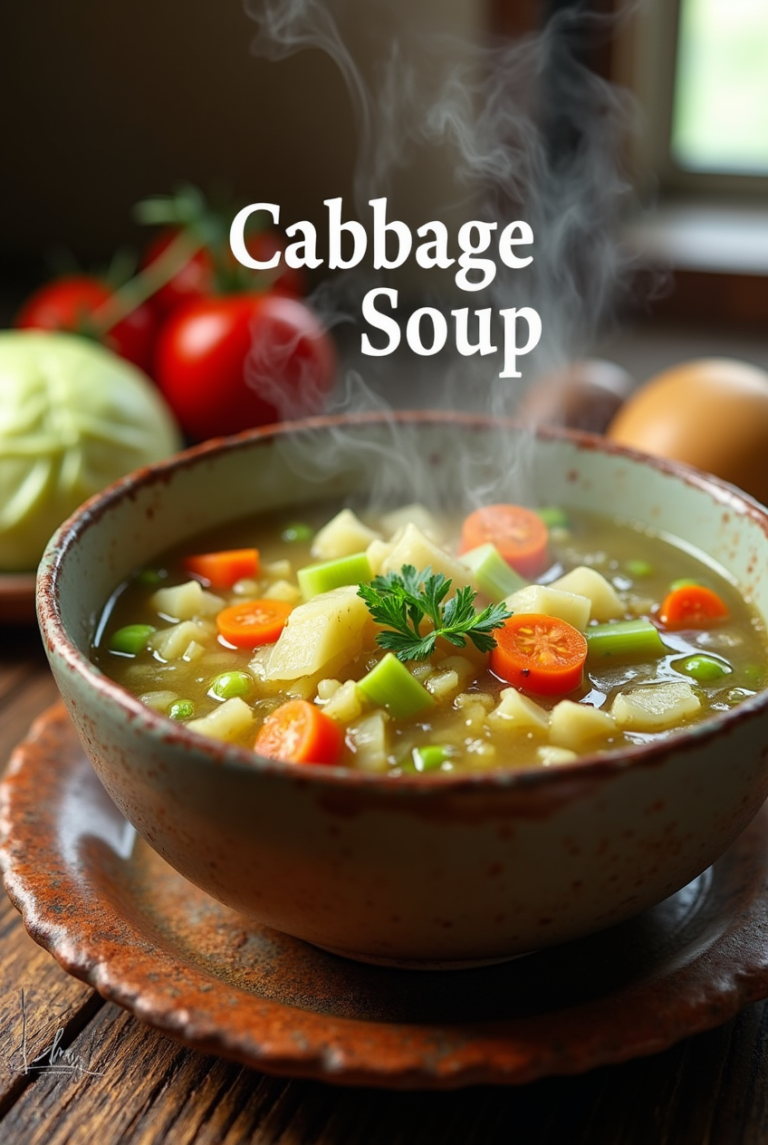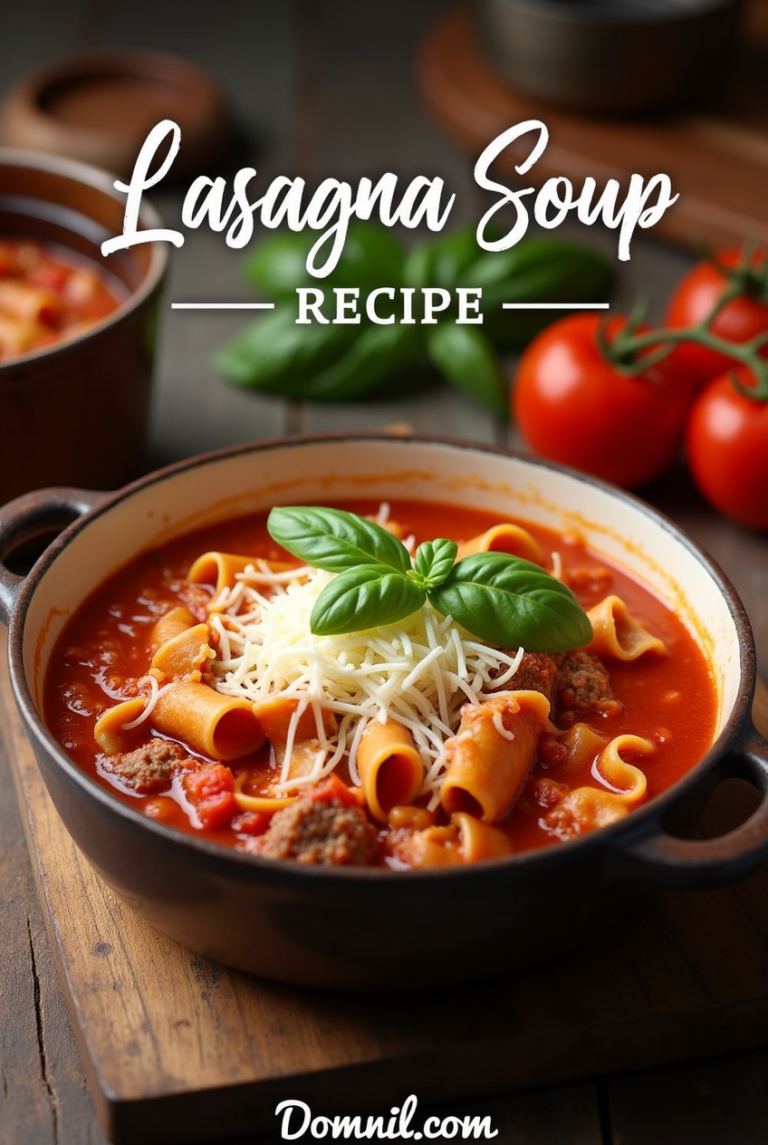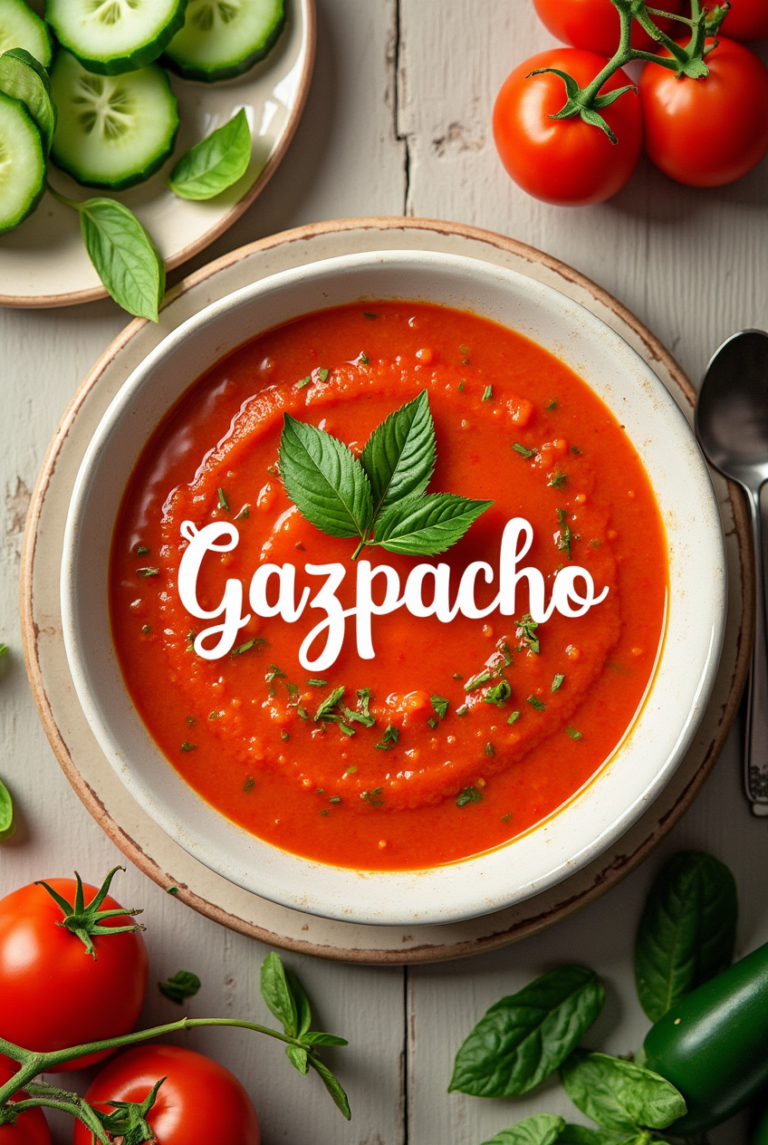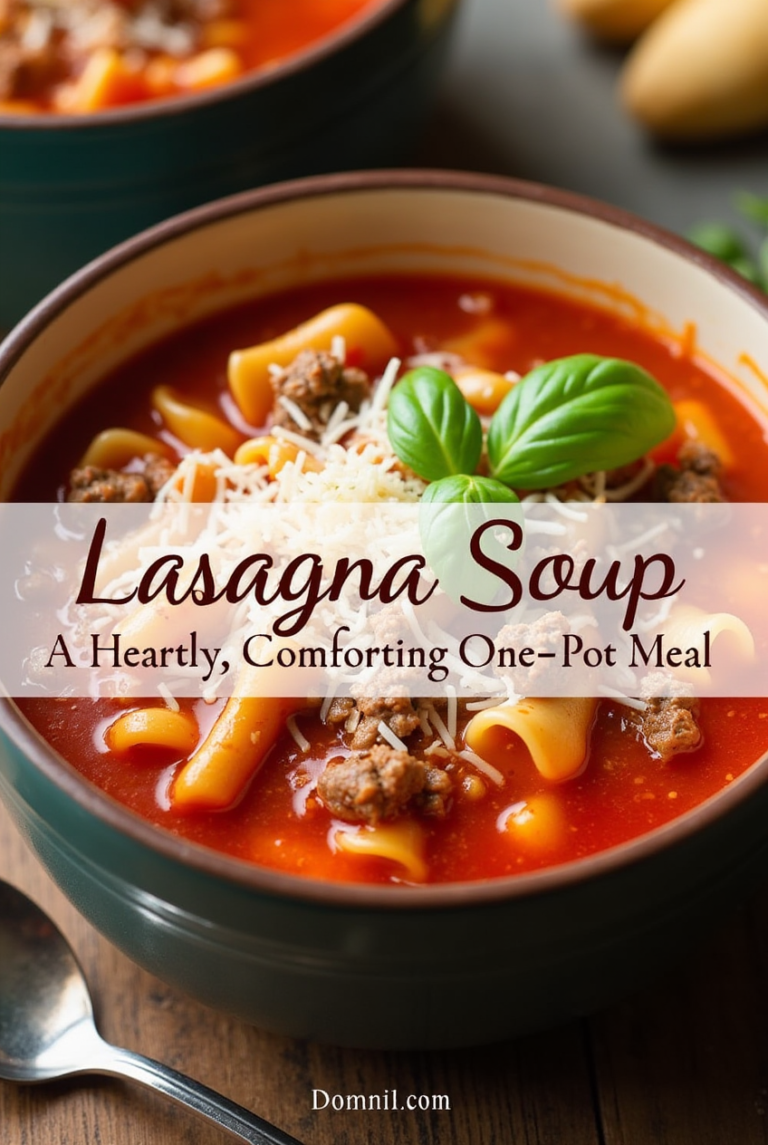Albondigas Soup: A Hearty Mexican Classic You’ll Love
Introduction to Albondigas Soup
What Is Albondigas Soup?
If you’ve never had albondigas soup before, you’re in for a treat. Picture this: tender, juicy meatballs swimming in a rich, savory broth filled with colorful vegetables and bursting with Mexican flavor. That’s albondigas soup in a nutshell. Known as “sopa de albóndigas” in Spanish, this comforting dish is a staple in many Hispanic households and has been warming hearts (and bellies) for generations.
Unlike typical meatball soups, what sets albondigas apart is the way the meatballs are made — often mixed with rice and fresh herbs, which gives them a light, almost airy texture. They soak up the flavors of the broth beautifully, making each bite an explosion of taste and comfort. It’s a complete meal in one bowl — protein-packed, veggie-loaded, and straight-up soul food.
Whether you’re under the weather, missing home, or just craving something cozy and filling, albondigas soup hits the spot. It’s easy to make, endlessly customizable, and perfect for family dinners, meal prep, or even freezing for later.
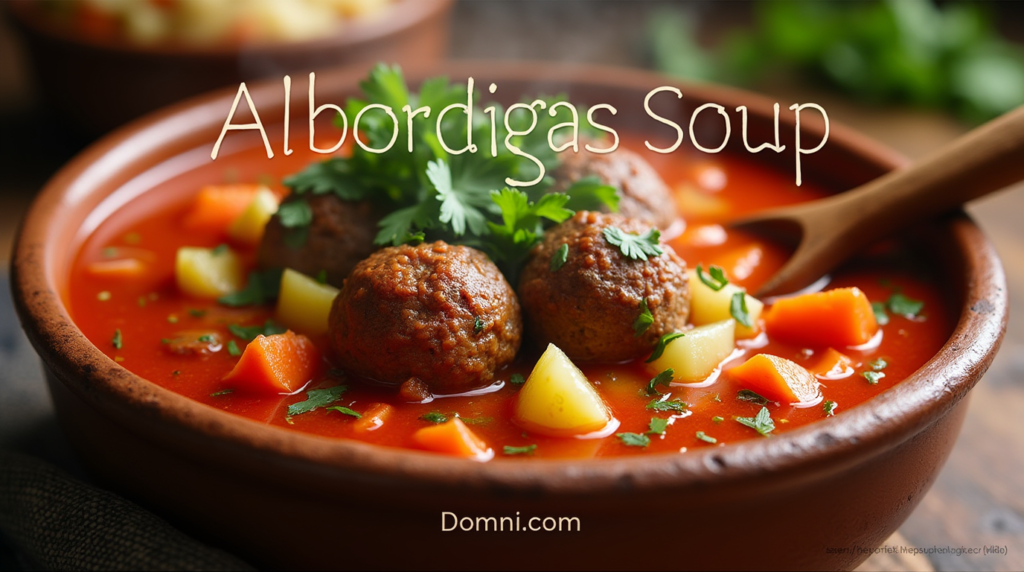
Table of Contents
The Origins of Albondigas Soup
Let’s take a quick stroll down history lane. The word “albondigas” comes from the Arabic word “al-bunduq,” meaning “hazelnut” or “small round object,” which pretty much describes the shape of the meatballs. During the Moorish occupation of Spain, the concept of spiced meatballs made its way into Spanish cuisine. Later, Spanish colonizers brought the dish to the Americas, where it evolved into the albondigas soup we know today.
In Mexico, albondigas soup became a humble household dish — a way to stretch meat into a full meal using pantry staples like vegetables, herbs, and rice. Over time, every family put their own twist on it. Some like it spicy, others add mint to the meatballs, and some prefer a tomato-heavy broth. There’s no single “right” way to make it — and that’s part of its charm.
Today, albondigas soup isn’t just a dish — it’s a tradition. Passed down through generations, it often shows up at family gatherings, Sunday dinners, or whenever someone needs a little extra love and nourishment.
Key Ingredients That Make Albondigas Soup Special
The Star of the Show: Meatballs (Albondigas)
Let’s talk meatballs. These aren’t your average spaghetti-and-meatballs kind of situation. Albondigas are typically made with ground beef or a mix of beef and pork, combined with uncooked rice, eggs, minced garlic, onions, and fresh herbs like cilantro or mint. The rice inside the meatballs cooks as the soup simmers, which gives them a fluffy, tender texture that’s hard to beat.
Some families like to throw in chopped veggies directly into the meatball mixture — things like carrots or zucchini — for an extra nutritional boost. And here’s the secret: don’t overwork the meat. The less you handle it, the more tender your albondigas will be. Roll them gently into balls just a bit smaller than a golf ball, and you’re good to go.
And yes — some folks like to brown them before adding to the soup, but traditional recipes often skip this step and just let them cook right in the broth. Why? Because this way, they soak up all that delicious flavor from the soup and stay super moist.
Fresh Veggies That Add Flavor and Nutrition
One of the best parts about albondigas soup? It’s loaded with veggies. You’ll usually find carrots, potatoes, celery, and zucchini, but honestly, you can throw in whatever you have on hand. Green beans? Sure. Corn? Go for it. Even spinach or kale work if you’re trying to boost the greens.
These vegetables not only bulk up the soup but also add layers of texture and sweetness. Carrots bring a natural sugar that balances the savory broth. Potatoes soak up the flavor like little sponges. And zucchini adds a soft bite that rounds everything out.
Plus, the variety of veggies makes it a one-bowl meal. You get protein, carbs, and fiber — all in one steamy, delicious bowl of comfort.
Broth Base: Spices and Seasonings That Make It Pop
Now, let’s talk broth — the foundation of any good soup. Albondigas soup typically starts with a base of chicken or beef broth, seasoned with tomatoes, garlic, onion, and a blend of warm spices. Think cumin, oregano, chili powder, and sometimes even a pinch of cinnamon.
Some versions include fresh diced tomatoes or even tomato sauce to deepen the flavor and give it a slightly reddish hue. Others go for a clearer broth if you want something lighter.
Fresh cilantro often gets added toward the end, giving the soup a bright, herby kick. And don’t forget the lime wedges when serving — a squeeze of lime brings all those rich flavors to life with just the right pop of acidity.
Optional additions like bay leaves, jalapeños, or even chipotle can give your broth a unique twist, depending on how adventurous you’re feeling. The beauty of albondigas soup is that it welcomes creativity — so make that broth your own!
Step-by-Step: How to Make Authentic Albondigas Soup
Making the Perfect Meatballs
First things first — the meatballs. Start by combining your ground meat with the classic add-ins: uncooked white rice (yep, uncooked — it cooks in the soup), a beaten egg to bind it all, minced garlic, diced onions, salt, pepper, and your herbs of choice. Cilantro and mint are most traditional, but you can play with parsley if that’s what you have.
Gently mix everything until combined. You don’t want to mash it together too much or the meatballs will turn out tough. Roll them into small balls — not too big or they’ll fall apart, not too small or they’ll dry out.
Set them aside on a plate while you prep your broth. Or, if you’re the meal-prep type, you can freeze them raw at this point for future soup-making.
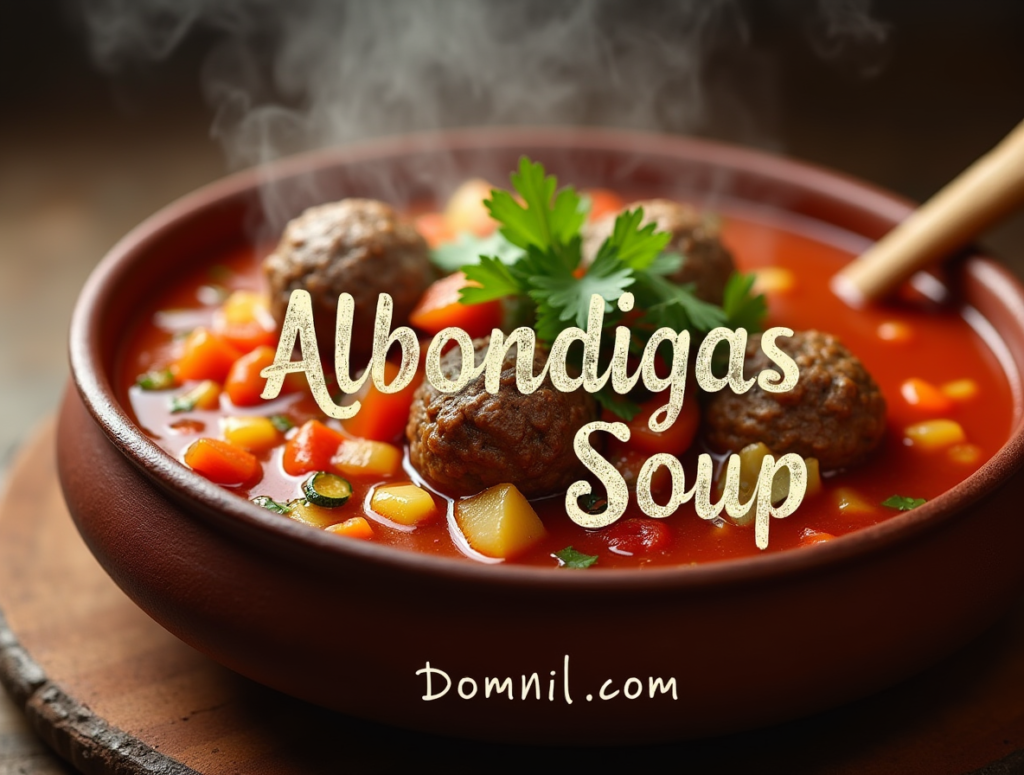
Crafting the Flavorful Broth
Once your meatballs are prepped and ready, it’s time to get the broth going. Start by heating a bit of oil in a large soup pot. Sauté chopped onions and garlic until fragrant — that’s your aromatic base. Then, add in diced tomatoes (fresh or canned) and cook them down for a few minutes until they soften and release their juices.
Now it’s spice time. Sprinkle in your cumin, oregano, and chili powder. Let the spices toast slightly in the oil and tomato mixture — this step is key to unlocking their full flavor. If you’re going for a spicier version, now’s the time to toss in some chopped jalapeño or a pinch of red pepper flakes.
Pour in your chicken or beef broth and bring the pot to a gentle simmer. Once it’s bubbling lightly, drop in your pre-rolled meatballs one by one. Be careful not to overcrowd the pot — give them space to cook evenly and soak up that goodness.
After about 15–20 minutes, start adding your chopped vegetables. Carrots and potatoes go in first since they take longer to soften. A bit later, add zucchini or green beans. Cook everything together until the veggies are fork-tender and the meatballs are fully cooked through — usually around 30–40 minutes total.
Pro tip: skim off any foam that rises to the top. It’s just impurities from the meat and broth, but removing it makes for a cleaner, clearer soup.
Putting It All Together
Now that your broth is rich and your meatballs are juicy, it’s time for the finishing touches. Taste the broth and adjust the seasonings. Need more salt? A dash of lime juice? Maybe a sprinkle of black pepper or more herbs? This is your moment to fine-tune.
Add a handful of chopped fresh cilantro just before serving — it adds an herby brightness that lifts the whole dish. Some people also like to stir in a little bit of cooked rice at the end for extra heartiness, especially if you didn’t use much in the meatballs.
Ladle the soup into big bowls, making sure each one gets a few meatballs and a good mix of veggies. Top with more cilantro, a wedge of lime, and maybe even a few avocado slices if you’re feeling extra. Serve with warm tortillas or crusty bread to mop up that flavorful broth.
And there you have it — authentic albondigas soup, straight from your kitchen to your heart.
Tips and Tricks to Elevate Your Albondigas Soup
Common Mistakes to Avoid
Even though albondigas soup is pretty forgiving, a few missteps can throw off the flavor or texture. Let’s break down what not to do.
- Overworking the meatball mixture – This one’s huge. Mixing too hard or too long makes the meat tough. Handle the mixture gently and keep it loose.
- Using cooked rice in the meatballs – It might seem logical, but cooked rice doesn’t absorb broth the same way. Stick with uncooked rice — it fluffs up inside the meatballs as they simmer.
- Adding all the vegetables at once – Different veggies cook at different speeds. If you toss them in all together, you’ll end up with mushy zucchini and hard potatoes. Layer your vegetables based on how long they take to cook.
- Boiling the meatballs too hard – A rolling boil can break them apart. A gentle simmer is all you need.
- Skipping the seasoning check – Always taste your broth before serving. Sometimes it needs a pinch more salt, a dash of lime, or a little more spice to bring it all together.
Learning from these small tweaks can turn a good soup into a spectacular one.
Flavor Boosters You Should Try
Want to level up your albondigas soup game? Try some of these pro-level upgrades:
- Fire-roasted tomatoes – Swap regular diced tomatoes for fire-roasted ones for a smoky kick.
- Chipotle in adobo sauce – Just a spoonful adds deep, smoky heat and complexity.
- Fresh mint in the meatballs – It sounds unusual, but mint is traditional in some regions and adds a cool contrast to the savory broth.
- Bay leaves – Toss one or two into the pot for added depth.
- Bone broth – Replace your standard broth with bone broth for extra richness and nutrition.
- Sofrito base – Some people start with a sofrito (a cooked mixture of garlic, onion, bell pepper, and tomato) to build a flavor-packed foundation.
The beauty of albondigas soup is that you can make it uniquely yours. Whether you’re keeping it classic or experimenting with fusion flavors, there’s room to play.
Customizing Your Albondigas Soup
Vegetarian and Vegan Options
Believe it or not, albondigas soup can go fully plant-based and still be downright delicious. Here’s how to make it happen.
For the meatballs, you can use a mix of lentils, cooked quinoa, or mashed chickpeas as a base. Add breadcrumbs, finely chopped vegetables (like mushrooms and onions), garlic, herbs, and a flax egg (1 tablespoon ground flaxseed + 2.5 tablespoons water) to help bind everything. Form into small balls and bake or gently simmer in the broth.
For the broth, use vegetable stock and load it up with your favorite veggies. Add a splash of soy sauce or tamari for extra umami. You could also stir in a bit of tomato paste or nutritional yeast for added richness.
The result? A hearty, filling, and satisfying vegan soup that keeps the spirit of albondigas alive — even without the meat.
Low-Carb or Keto-Friendly Tweaks
Watching your carbs? No problem — albondigas soup can be easily adapted to fit your needs.
In the meatballs, skip the rice and use almond flour or ground pork rinds as a binder. They’ll still hold together well and stay juicy. You can also mix in shredded zucchini or cheese for added moisture.
For the broth, avoid starchy veggies like potatoes or corn. Instead, use lower-carb options like cauliflower, zucchini, bell peppers, or spinach. Add a splash of heavy cream or coconut milk for a creamier twist, or keep it brothy for a cleaner, lighter feel.
These changes keep the soup filling and flavorful — minus the carbs. Perfect for keto or paleo diets!
Spicy or Mild? You Choose
Spice levels are all about personal preference — and albondigas soup is super flexible. If you love heat, try adding:
- Fresh jalapeños or serrano peppers
- Chipotle peppers in adobo sauce
- A sprinkle of cayenne pepper
- Crushed red pepper flakes
For a milder version, skip the spicy ingredients altogether and focus on the savory herbs and rich broth. You can even make a big batch of mild soup and serve with hot sauce on the side so everyone can spice it up to their taste.
There’s no wrong way — just your way.
Serving Suggestions and Pairings
What to Serve with Albondigas Soup
Albondigas soup is hearty enough to stand on its own, but pairing it with the right side dishes takes it to a whole new level. Think of it like a cozy Mexican dinner spread — you’re building a full experience here.
Start simple: warm tortillas are a must. Corn tortillas are more traditional, but flour works too. Toast them lightly or even make a few fresh ones if you’re up for it. You can dip them right into the broth or use them to scoop up those juicy meatballs.
Mexican rice is another classic pairing. The fluffy, tomato-infused grains are a perfect match for the rich, savory broth of albondigas. If you’re looking to double down on comfort food, this is the way to go.
Want something lighter? Try a simple avocado salad with lime juice, red onions, and cilantro. The creamy, cool contrast plays beautifully with the warm soup.
And if you’re feeding a crowd, you can’t go wrong with a platter of quesadillas, grilled elote (Mexican street corn), or even tamales on the side. These add variety and make the meal feel more festive.
Best Drinks and Sides for a Full Meal
Let’s talk drinks. A glass of agua fresca — like watermelon, hibiscus (jamaica), or horchata — is refreshing and balances the warmth of the soup. Want something bubbly? A cold Mexican soda, like Jarritos or Topo Chico, is a fizzy favorite.
If you’re leaning adult-beverage style, cerveza (beer) is a natural pick. A light lager like Pacifico or Modelo balances the spice and richness perfectly. Or, for a classier touch, a crisp white wine like Sauvignon Blanc will cut through the richness and refresh your palate.
For dessert, you can finish off the meal with something simple and sweet — flan, churros, or a few pieces of pan dulce with café de olla.
It’s all about that balance of flavors and textures. Warm, hearty soup. Cool, crisp drinks. Light, fresh sides. That’s how you build a meal that makes people come back for seconds — and thirds.
Storing and Reheating Tips
How Long Does It Last in the Fridge?
One of the best parts about albondigas soup is how well it keeps. Made a big batch? You’re in luck — the flavors only get better with time.
Stored properly in an airtight container, albondigas soup can last in the fridge for up to 4–5 days. Just make sure to let it cool completely before sealing it up. Nobody wants condensation turning your broth cloudy.
Refrigerated soup will thicken slightly due to the rice soaking up more liquid, but that’s nothing a splash of broth or water can’t fix when reheating. Just stir it back to life on the stovetop over medium heat until hot and bubbly again.
If you’re meal-prepping for the week, store individual portions in microwave-safe containers. That way, you’ve got easy grab-and-go lunches or dinners that’ll fill you up and keep you cozy.
Can You Freeze Albondigas Soup?
Absolutely — albondigas soup freezes beautifully. In fact, it might be one of the best soups to freeze because the meatballs hold up so well.
Here’s how to do it right:
- Let the soup cool completely.
- Portion it into freezer-safe bags or containers — make sure to leave room at the top for expansion.
- Label with the date (you’ll thank yourself later).
- Freeze for up to 3 months.
When you’re ready to eat, thaw overnight in the fridge or defrost gently in the microwave. Reheat on the stove, adding a bit of water or broth if it’s thickened too much.
If you’re planning ahead, you can also freeze just the raw meatballs separately and add them to fresh broth when you’re ready to cook. They’ll hold their shape perfectly and taste just like they were made fresh.
Nutritional Benefits of Albondigas Soup
High-Protein and Balanced Meal
Let’s get into the health perks, shall we? Albondigas soup isn’t just delicious — it’s also a seriously nutritious meal.
Each serving packs a solid dose of lean protein from the ground meat. Add in the rice and veggies, and you’re looking at a balanced mix of macronutrients: protein, complex carbs, and fiber. It’s a full meal that leaves you satisfied without being heavy.
The soup is also loaded with vitamins and minerals thanks to the variety of vegetables. Carrots bring beta-carotene, potatoes offer potassium, and zucchini is rich in vitamin C and antioxidants. You’re nourishing your body with every spoonful.
And because it’s broth-based, it’s naturally lower in fat and calories than creamy or cheesy soups — unless you choose to add extras like cheese or cream (no judgment if you do!).
Great for Weight Loss or Muscle Gain?
Absolutely. Albondigas soup can easily fit into a variety of fitness and wellness goals, depending on how you tweak it.
For weight loss, go light on the rice, skip the starchy potatoes, and load up on lean meat and veggies. Stick with a clear broth base and serve smaller portions with a side salad or steamed greens.
For muscle gain, use ground beef with a slightly higher fat content or a beef/pork mix for extra calories and flavor. Keep the rice and potatoes for carbs and maybe even add beans or corn for more density. The protein content supports muscle repair and growth, especially post-workout.
It’s comforting food that doesn’t derail your goals — it’s flexible, satisfying, and full of the good stuff.
Cultural Significance of Albondigas Soup
Family Traditions and Gatherings
Ask any Mexican-American or Latino family, and they’ll probably have a story about albondigas soup. It’s one of those dishes that’s deeply tied to memories and traditions — often served during Sunday dinners, cold winter nights, or special occasions.
In many homes, abuelita (grandma) is the one who makes the best albondigas. Her recipe might be scribbled on an old notecard or passed down by word of mouth. Making albondigas soup often becomes a family affair, with kids helping to roll the meatballs while parents chop veggies and stir the pot.
It’s a dish that brings people together. Whether you’re serving a big pot to guests or just feeding your family on a busy weeknight, there’s something comforting about ladling out steaming bowls of this homemade classic.
Albondigas in Mexican-American Homes
In Mexican-American communities, albondigas soup carries the weight of both heritage and adaptation. It’s a dish that bridges generations — bringing together the flavors of Mexico with the lifestyle and ingredients of life in the U.S.
Some families add corn, peas, or canned tomatoes because that’s what’s available. Others make giant batches in Instant Pots or Crock-Pots to keep up with busy schedules. And in every version, there’s love and care poured into every step.
It’s not just about the soup. It’s about staying connected to your roots, preserving culture through food, and making sure that even as the world changes, that warm bowl of albondigas is always on the table.
Essential Tools for Albondigas Soup:
- Large Soup Pot/Dutch Oven – For even cooking and simmering.
- Mixing Bowls – To prepare meatballs and chop veggies.
- Measuring Cups/Spoons – For precise seasoning and broth.
- Wooden Spoon/Spatula – Gentle stirring to avoid breaking meatballs.
- Chef’s Knife & Cutting Board – For chopping vegetables and herbs.
- Small Scoop/Spoon – To shape uniform meatballs.
- Skillet (Optional) – For browning meatballs before simmering.
- Ladle – For serving soup with broth and meatballs.
- Storage Containers – For leftovers or freezing.
Conclusion
Albondigas soup is more than just a traditional Mexican dish — it’s a symbol of warmth, love, and shared heritage. From the juicy, flavor-packed meatballs to the hearty vegetables and richly seasoned broth, every spoonful tells a story. Whether you’re recreating your grandmother’s time-honored recipe or adding your own twist, this soup brings people together in a way that only homemade food can.
Its flexibility makes it a staple in countless kitchens: it can be spicy or mild, meaty or vegan, low-carb or carb-loaded, depending on what you need. It stores well, freezes beautifully, and only gets better the next day. Plus, it pairs with everything from tortillas and rice to crisp salads and refreshing drinks.
What really makes albondigas soup special, though, is how it brings people to the table. It’s the kind of meal that sparks conversation, invites seconds, and makes memories. Whether you’re serving a big family or just treating yourself, a steaming bowl of albondigas is like a hug in a bowl — comforting, satisfying, and timeless.
So roll up your sleeves, gather your ingredients, and let that pot simmer. Your perfect bowl of albondigas soup is just a few steps away — and it’s absolutely worth it.
Frequently Asked Questions (FAQs)
1. Can I use turkey or chicken instead of beef for albondigas soup?
Yes! Ground turkey or chicken makes a great leaner alternative to beef. Just make sure to add a little extra seasoning or a splash of oil, as lean meats can be drier. The meatballs will still be tender and delicious with the right balance of spices and herbs.
2. Why did my meatballs fall apart in the soup?
This usually happens when there isn’t enough binder (like egg or rice) or if the mixture is overmixed. Be gentle when mixing and forming the meatballs. Also, make sure the broth is at a gentle simmer — a rolling boil can break them apart.
3. Can I make albondigas soup in a slow cooker or Instant Pot?
Absolutely! In a slow cooker, add the broth, vegetables, and raw meatballs and cook on low for 6–8 hours. In an Instant Pot, use the soup setting or cook at high pressure for about 20 minutes, followed by a natural release. Both methods make the soup super flavorful and hassle-free.
4. Is albondigas soup gluten-free?
It can be! Just use gluten-free breadcrumbs or skip them entirely in the meatballs. Also, double-check your broth and spices to make sure they’re certified gluten-free. It’s easy to adapt this recipe for gluten-sensitive eaters.
5. How do I make the broth more flavorful?
To boost your broth, try sautéing your aromatics longer, using homemade stock, or adding umami boosters like tomato paste, soy sauce, or a bay leaf. A splash of lime juice or vinegar at the end also adds a bright, balanced finish.

